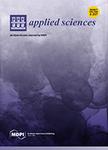版权所有:内蒙古大学图书馆 技术提供:维普资讯• 智图
内蒙古自治区呼和浩特市赛罕区大学西街235号 邮编: 010021

作者机构:Xian Univ Sci & Technol Sch Mech Engn Xian 710054 Peoples R China
出 版 物:《APPLIED SCIENCES-BASEL》 (Appl. Sci.)
年 卷 期:2025年第15卷第3期
页 面:1645-1645页
核心收录:
基 金:Shaanxi Provincial Natural Science Basic Research Program Natural Science Research Project of the Department of Education of Shaanxi Province [23JK0548] Key Research and Development Program of Shaanxi Province [2024GX-YBXM-524] 2023-JC-YB-362
主 题:fastener-nut disassembly and assembly robot spiral rail spike complex environment improved Canny algorithm HOG feature similarity center positioning
摘 要:Visual positioning accuracy is crucial for ensuring the successful execution of nut disassembly and assembly tasks by a fastener-nut disassembly and assembly robot. However, disturbances such as on-site lighting changes, abnormal surface conditions of nuts, and complex backgrounds formed by ballast in complex railway environments can lead to poor visual positioning accuracy of the fastener nuts, thereby affecting the success rate of the robot s continuous disassembly and assembly operations. Additionally, the existing method of detecting fasteners first and then positioning nuts has poor applicability in the field. A direct positioning algorithm for spiral rail spikes that combines an improved Canny algorithm with shape feature similarity determination is proposed in response to these issues. Firstly, CLAHE enhances the image, reducing the impact of varying lighting conditions in outdoor work environments on image details. Then, to address the difficulties in extracting the edges of rail spikes caused by abnormal conditions such as water stains, rust, and oil stains on the nuts themselves, the Canny algorithm is improved through three stages, filtering optimization, gradient boosting, and adaptive thresholding, to reduce the impact of edge loss on subsequent rail spike positioning results. Finally, considering the issue of false fitting due to background interference, such as ballast in gradient Hough transformations, the differences in texture and shape features between the rail spike and interference areas are analyzed. The HOG is used to describe the shape features of the area to be screened, and the similarity between the screened area and the standard rail spike template features is compared based on the standard Euclidean distance to determine the rail spike area. Spiral rail spikes are discriminated based on shape features, and the center coordinates of the rail spike are obtained. Experiments were conducted using images collected from the field, and the resu